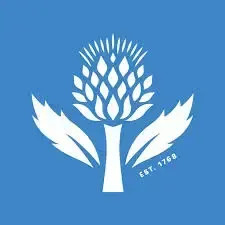Bolivia, a country brimming with cultural richness and breathtaking landscapes, often sparks curiosity about its location. Nestled in the heart of South America, Bolivia is a landlocked nation that boasts a diverse geography, from towering Andean peaks to lush Amazonian lowlands. Understanding where Bolivia is situated is key to appreciating its unique identity and ecological significance.
Bolivia occupies a central position in South America, sharing borders with five countries. To its north and east lies Brazil, the continent’s largest nation. Argentina is situated to the south, while Paraguay borders Bolivia to the southeast. Chile is to the southwest, and Peru to the northwest. This central location has historically and geographically positioned Bolivia as a crucial crossroads within South America.
The country’s western region is dramatically defined by the Andes Mountains, one of the world’s longest and highest mountain ranges. This area is not only geographically significant but also serves as Bolivia’s economic and political nucleus. Within this Andean expanse, the landscape is characterized by two major, parallel mountain ranges. The Cordillera Occidental, bordering Chile, is renowned for its volcanic activity and the stunning Uyuni Salt Flat, the world’s largest salt flat. This range culminates in Mount Sajama, Bolivia’s highest peak, soaring to 21,463 feet (6,542 meters).
 Uyuni Salt Flat, Bolivia
Uyuni Salt Flat, Bolivia
To the east, the Cordillera Oriental presents a contrasting yet equally majestic range. Its northern section, near La Paz, is famously known as the Cordillera Real, or “Royal Range.” This segment is a spectacle of snow-capped peaks, some exceeding 20,000 feet (6,100 meters), maintaining a formidable average elevation for over 200 miles (320 km).
Between these two imposing ranges lies the Altiplano, or “High Plateau.” This vast plateau stretches from southern Peru, across Bolivia, and into northern Argentina. It’s a remarkably flat depression, approximately 500 miles (800 km) long and 80 miles (130 km) wide, sitting at elevations between 12,000 and 12,500 feet (3,650 and 3,800 meters). The Altiplano’s surface, composed mainly of deposits from the surrounding mountains, gently slopes southward, punctuated by occasional hills and ridges. Lakes Titicaca and Poopó are central features of the Altiplano, traditionally vital for agriculture, economy, and culture.
 Uyuni Salt Flat, Bolivia
Uyuni Salt Flat, Bolivia
Descending from the Cordillera Real and the Apolobamba range to the east reveals a dramatic shift in terrain. The landscape plunges into the Yungas, a rugged, rainy, and heavily forested belt. The Aymara term “Yungas” translates to “Warm Lands” or “Warm Valleys,” reflecting the region’s lower altitude and warmer climate compared to the Altiplano. The Yungas are part of a larger region extending along the eastern Andes through Colombia, Ecuador, and Peru, known as Alto Selva or High Rainforest in Peru. In Bolivia, Yungas often specifically refers to the region northeast of La Paz, bordering Alto Beni, part of the broader Yungas region.
Moving south in Bolivia, the Andes widen, forming the Puna, a high, tilted block characterized by west-facing escarpments and gentler eastward slopes toward the plains. The Puna is interspersed with the Valles, a system of fertile valleys and mountain basins. These valleys, generally larger and less confined than the Yungas, lie at elevations between 6,000 and 9,500 feet (1,800 and 2,900 meters). They are renowned for their rich agricultural diversity and are home to cities like Cochabamba, Sucre, and Tarija.
North and east of the Andes and Yungas lies the Oriente region, an extension of the Amazon River basin. This vast area encompasses over two-thirds of Bolivia, featuring low alluvial plains (llanos), extensive swamps, flooded bottomlands, open savannas, and tropical forests. The Oriente is biologically rich, hosting a wide array of wildlife and Bolivia’s largest population center, Santa Cruz city, which is also the heart of the country’s fastest-growing regional economy.
In Bolivia’s extreme south is the Bolivian Chaco, part of the larger Gran Chaco. This level area experiences stark seasonal variations, transforming into a swamp during the rainy season and a hot semidesert for the rest of the year. North of the Chaco, the Santa Cruz department exhibits a gentle slope northward, transitioning into the savannas and tropical rainforests of the northern departments of Beni and Pando within the Oriente region.
In conclusion, Bolivia’s location in the center of South America dictates its incredible geographical diversity. From the towering Andes and the high Altiplano in the west to the Yungas, Valles, and finally the expansive Oriente and Chaco in the east and south, Bolivia presents a continent within a country. Understanding “Bolivia Where Is It” is not just about pinpointing it on a map, but also about appreciating the remarkable range of landscapes and ecosystems contained within its borders.

